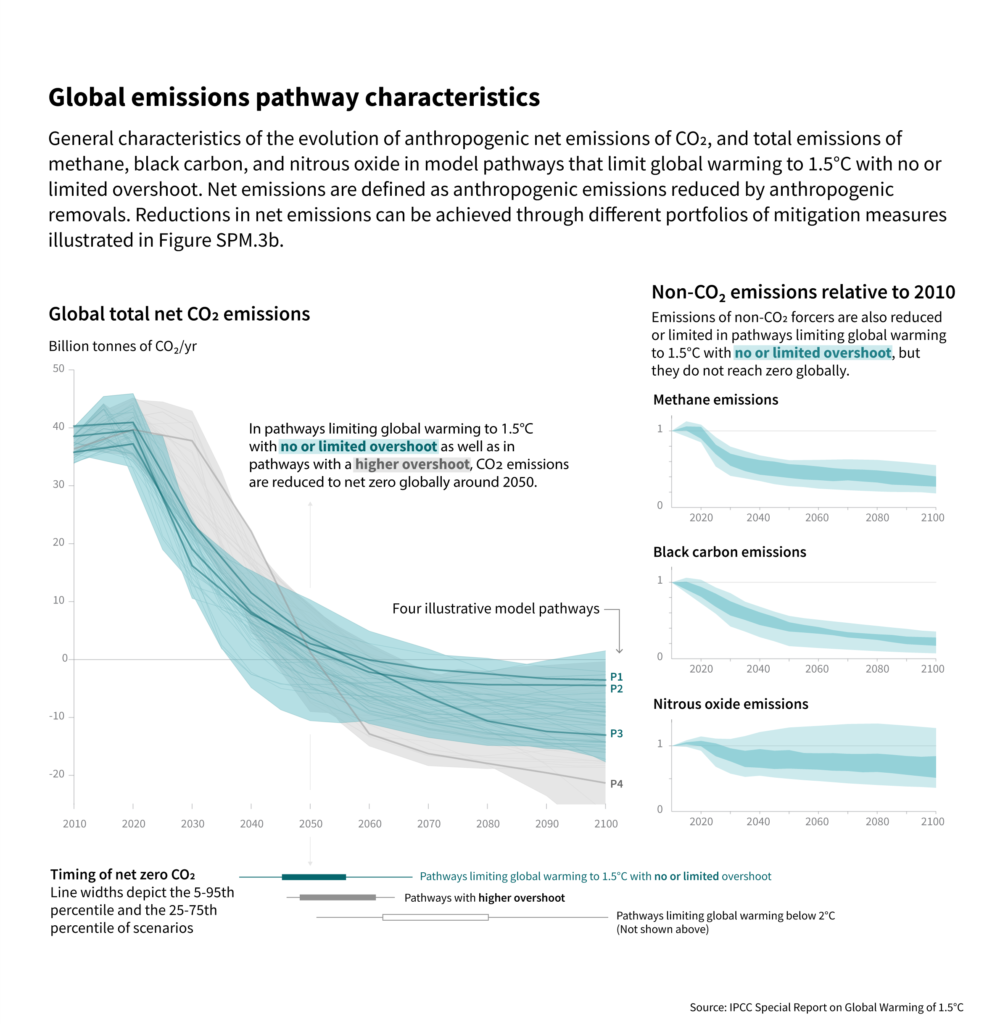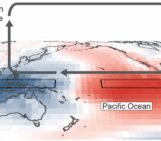
One often hears that ambitious climate policy might be premature while climate change is still “uncertain”. This sounds like a fair argument: The amount of global warming per doubling CO2 is not well constrained, and the amount of economic damage per degree of warming even less. But is this uncertainty a sound excuse to wait and see?
Uncertainty, risk aversion, and insurance
If you knew the winning combination of this week’s lottery, you would surely buy a lot. If you knew for some reason that your house will burn down this year, you would obviously get a fire insurance. But in real life, you cannot be sure of the winning combination or fire. Is it wise to buy a lot or a fire insurance under this uncertainty? In gambling, a game is often considered “fair” if the expectation value of the gain – i.e. the average gain if the same game is repeated very often – is zero.
Insurances are not “fair” under this criterium, because the premiums not only cover the occasional pay-off in case of damage, but also the wages of their employees. Yet it is prudent to have fire insurance. Paying the premium means a certain loss of some tens of Euros/month – very likely without any return, because the chance of your house burning is not very high. Yet a totally burnt house without financial compensation might be ruinous. Most humans weigh unlikely, but very bad outcomes more than the expectation value method would suggest and are keen to avoid or mitigate worst-case scenarios, even if improbable and uncertain. In other words, most humans are risk-averse.
In a society where fire insurances are common, it seems inconsistent to wave off climate protection on the ground that we do not exactly know in what way and how much our climate will change in the future. Focusing too much on scientific certainty is a dead end; waiting for definite “proofs” wastes precious time (and, philosophically speaking, you cannot “prove” anything in an empirical science like climate physics). Rather, we should think of climate change like an insurance problem: Stringent climate policy may be overly costly in the case of a weak climate sensitivity to greenhouse gas emissions, but the cost of policy is still immensely smaller than the damage inflicted by climate change in the worst-case scenarios.
The risk to insure against
It is impossible to quantify exactly the cost of unmitigated climate change: First, there is uncertainty about the amount of global warming per additional atmospheric CO2 content (IPCC AR5 WG1 Ch 12, 2013), and about associated changes of other climate variables such as rainfall and soil moisture (IPCC AR5 WG1 Ch 12, 2013). Next, there is uncertainty about the impact on other components of the environment (e.g., how vulnerable is the Amazon rainforest to drought? Lenton et al., 2008). Finally, it is even harder to predict the impacts on society and measure them in monetary terms. If coral bleaching destroys a fishery in some tropical island, what is the damage? The average sales value of the fish caught? But how to quantify the impact on the livelihood of the local fishermen? Maybe they will starve, or start a bloody struggle for land against the nearby farmers. Or maybe they will receive development aid to open a successful sailing school for tourists and be better off than before.
But even though we cannot quantify the damage, we definitely cannot rule out it will be disastrous. Permafrost, already thawing rapidly (Farquharson et al., 2019), releases additional greenhouse gases and might severely aggravate global warming. Species and whole ecosystems are already becoming extinct, a trend which will only accelerate under climate change (IPCC AR5 WG2 Ch. 19, 2014; Urban, 2015). Since we don’t fully understand their complex interconnections with other components of the Earth System, we do not know how this may affect human society (e.g. through loss of pollinating insects). In many regions, especially in the tropics, heat stress and water scarcity may severely affect plant growth (IPCC AR5 WG2 Ch. 7, 2014), leading to diminishing agricultural yields, which in combination with population increase may cause severe food shortage (IPCC AR5 WG2 Ch. 7, 2014; IPCC SR LAND, 2019) – maybe even at global level. Social unrest, mass migration, and wide-spread violent conflicts might follow.
All these are plausible scenarios. We are not certain that they will happen if humanity continues to emit CO2, but as in the case of fire insurance, catastrophic outcomes are at least plausible: a severe risk that a prudent humanity ought to reduce.
The costs of the “climate insurance”
It is widely accepted by scientists and policy makers that we should aim to keep global warming well below 2K, preferably below 1.5K. To do so, we would need to reach net-zero carbon emissions before about 2060 (see Fig. 1). This seems quite feasible: the British Energy Transition Commission, after interviewing 200 leading industry experts, estimates that even the difficult sectors (e.g. aviation, long-range transport, steel and cement production; together producing ⅓ of all CO2 emissions) could be mostly decarbonised by 2050-60, with technologies that already exist, though some of them are not yet market-ready (Turner et al., 2018).

Figure 1: Emission pathways compatible with a warming of 1.5K by 2100, taken from (IPCC SR 1.5degree, SPM, 2018; fig. SPM 3A). Note that net zero CO2 emissions are reached by ca 2060 in most scenarios. Original figure capture: the main panel shows global net anthropogenic CO2 emissions in pathways limiting global warming to 1.5°C with no or limited (less than 0.1°C) overshoot and pathways with higher overshoot. The shaded area shows the full range for pathways analysed in this Report. The panels on the right show non-CO2 emissions ranges for three compounds with large historical forcing and a substantial portion of emissions coming from sources distinct from those central to CO2 mitigation. Shaded areas in these panels show the 5–95% (light shading) and interquartile (dark shading) ranges of pathways limiting global warming to 1.5°C with no or limited overshoot. Box and whiskers at the bottom of the figure show the timing of pathways reaching global net zero CO2 emission levels, and a comparison with pathways limiting global warming to 2°C with at least 66% probability. Four illustrative model pathways are highlighted in the main panel and are labelled P1, P2, P3 and P4, corresponding to the LED, S1, S2, and S5 pathways assessed in Chapter 2. Descriptions and characteristics of these pathways are available in Figure SPM.3b. {2.1, 2.2, 2.3, Figure 2.5, Figure 2.10, Figure 2.11}.
To reach net-zero emissions, a rapid increase in “green” electricity production is a must. In addition, fuel use should be replaced by (green) electricity use wherever possible (cars, residential heating, industrial processes). Storage options, from batteries to hydrogen or methane, must be expanded. Biofuels are naturally limited because of land-use conflicts with food production and ecosystem protection, so these should only be used in sectors where other options are infeasible (e.g. plastic production, possibly aviation). Some industrial processes (e.g. chemical industries, cement production) cause “process emissions” of CO2 unrelated to energy use. These will have to be prevented or compensated by Carbon Capture and Storage schemes, i.e. capturing CO2 either from emission sources or ambient air and storing or even utilising it.
The costs of decarbonisation would be modest: about 0.5-1% of the global GDP for the difficult sectors mentioned above (Turner et al., 2018), and 1-2% overall. Assuming a global GDP growth of 2% (currently a low-end estimate), spending 2% on decarbonisation basically means to delay growth by one year: next year we will “only” be as rich as this year. A bargain! The main reason for this low figure is the drastic price reduction in solar cells, wind turbines and batteries over the last few years.
The projected low cost of decarbonisation does not mean that it is “easy”: It probably requires a carefully chosen set of policy measures to ensure both efficiency and political acceptance. Just setting a uniform global carbon tax, might be overly simplistic. Instead, a strong decarbonisation strategy will probably need to include the following elements:
– clear and timely communication of the goals, to give industry (and households) time to consider their investments. Many machines have lifetimes of several decades. If, for example, coal power plants are to be banned by 2050, electricity providers should know in time to avoid the “sunk costs” of investing in them.
– Active government support for research and development in green technologies (Mazzucato, 2018, Ch. 6-7), because even with a carbon tax, the private sector alone will probably not undertake the risk to perform expensive, ground-breaking research.
– Government support to scale up promising technologies, such as feed-in tariffs for green energy. For example, the strong price drop for solar cells was largely due to the German “Energiewende”, which pushed solar cell production (and hence, price-reducing learning-by-doing dynamics) before solar panels were competitive. Of course, once a new technology becomes (nearly) competitive, subsidies are no longer necessary.
– A carbon price or tax is useful to give an advantage to carbon-free technologies that are already quite advanced, but still a bit more expensive than polluting alternatives. One might consider to make the tax sector dependent, i.e. fixing it for each sector such as to give just enough advantage to the green technologies. The carbon tax can also be used to generate state income, which can either be spent to finance other green projects, or to remove possible social injustice of the energy transition (e.g. compensate poorer citizens for higher electricity prices). If not all countries agree to a global carbon tax, import and export duties could be used in combination with national level carbon taxes, so that the nation’s industry is not put at a disadvantage by international competition.
– Demand-side policies: Individual consumers are less likely to react “fully rationally” to a carbon tax. Unlike firms, individuals often don’t sit down to compute lifetime electricity cost for each new appliance they may buy. In some cases, information supply may help (e.g. energy labels for fridges), or blunt regulations (e.g. banning the production of new inefficient fridges). On the other hand, if households are required to make large up-front payments (e.g. to insulate their house, which may save money in the long run but is initially capital intensive), poorer households may need assistance in the form of subsidies or cheap credits. Finally, some polluting behaviours can be avoided by public measures, e.g. providing extensive affordable public transport to reduce the need for private cars.
Decarbonisation is a major challenge, but feasible – rather less daunting, perhaps, than the work of our forefathers who built the first railway network.
Why don’t we go for it?
“If there were a benevolent global dictator”, says Lord A. Turner, the chairman of the Energy Transition Commission, during a presentation he held in Pisa in September 2019, “I am 99.9% sure that we would reach net-zero Carbon emissions by 2050 in developed countries and by 2060 in the developing world – at an affordable cost below 2% of the GDP. But in reality, I am only 30% confident that we will do it.”
What prevents us from taking the only prudent course and pressing our politicians to do so? A bundle of very human frailties (Stoknes, 2015): affection to our faithful old diesel car, the anger of seeing a windmill erected in our backyard or the fear of losing our job as motor mechanic, frustration about our own tiny contribution not making any difference, the soothing thought that climate action can start tomorrow or after our Caribbean holiday, and the sanguine hope that climate change, that hotly debated, uncertainty-shrouded spectre, will not be as bad as those gloomy scientists predict. We are attached to our cosy little world and don’t want it disturbed by climate policy today while the real threat – climate change – is distant and uncertain.
But there is hope. We are not that risk-ignoring after all: we buy fire insurances, sacrificing a manageable amount of money to stave off the unmanageable, but distant, risk of losing our home. And while climate change is a more complex problem because it requires global cooperation, the insurance terms are rather more favorable than for private fire insurance: the “insurance costs” are again manageable, but the likelihood of disastrous climate change in the absence of action is arguably higher. And the costs of climate policy don’t just vanish in some insurer’s purse, but pay for better (sustainable) infrastructure and give additional short-term benefits like cleaner air and – e.g. if people rely more on bikes and an affordable public transport – greener, more liveable cities. The climate “insurance” is probably the only insurance which offers a positive expectation value.
So, rather than demanding climate scientists to “prove” with 100% certainty that climate change is a disaster before considering any action, it should be down to the “climate sceptics” to prove with 100% certainty that greenhouse gases are harmless. If they can’t, well – then let us prudently avert the risk of climate change!
This post has been edited by the Editorial Board.
REFERENCES Farquharson, L. M., Romanovsky, V. E., Cable, W. L., Walker, D. A., Kokelj, S. V., & Nicolsky, D. (2019). Climate change drives widespread and rapid thermokarst development in very cold permafrost in the Canadian High Arctic. Geophysical Research Letters, 46, 6681–6689. https://doi.org/10.1029/ 2019GL082187. IPCC AR5 WG1, Ch. 12, 2013 Collins, M., R. Knutti, J. Arblaster, J.-L. Dufresne, T. Fichefet, P. Friedlingstein, X. Gao, W.J. Gutowski, T. Johns, G. Krinner, M. Shongwe, C. Tebaldi, A.J. Weaver and M. Wehner, 2013: Long-term Climate Change: Projections, Commitments and Irreversibility. In: Climate Change 2013: The Physical Science Basis. Contribution of Working Group I to the Fifth Assessment Report of the Intergovernmental Panel on Climate Change [Stocker, T.F., D. Qin, G.-K. Plattner, M. Tignor, S.K. Allen, J. Boschung, A. Nauels, Y. Xia, V. Bex and P.M. Midgley (eds.)]. Cambridge University Press, Cambridge, United Kingdom and New York, NY, USA. IPCC AR5 WG2, Ch.7, 2014 Porter, J.R., L. Xie, A.J. Challinor, K. Cochrane, S.M. Howden, M.M. Iqbal, D.B. Lobell, and M.I. Travasso, 2014: Food security and food production systems. In: Climate Change 2014: Impacts, Adaptation, and Vulnerability. Part A: Global and Sectoral Aspects. Contribution of Working Group II to the Fifth Assessment Report of the Intergovernmental Panel on Climate Change [Field, C.B., V.R. Barros, D.J. Dokken, K.J. Mach, M.D. Mastrandrea, T.E. Bilir, M. Chatterjee, K.L. Ebi, Y.O. Estrada, R.C. Genova, B. Girma, E.S. Kissel, A.N. Levy, S. MacCracken, P.R. Mastrandrea, and L.L. White (eds.)]. Cambridge University Press, Cambridge, United Kingdom and New York, NY, USA, pp. 485-533. IPCC AR5 WG2 Ch. 19, 2014 Oppenheimer, M., M. Campos, R. Warren, J. Birkmann, G. Luber, B. O’Neill, and K. Takahashi, 2014: Emergent risks and key vulnerabilities. In: Climate Change 2014: Impacts, Adaptation, and Vulnerability. Part A: Global and Sectoral Aspects. Contribution of Working Group II to the Fifth Assessment Report of the Intergovernmental Panel on Climate Change [Field, C.B., V.R. Barros, D.J. Dokken, K.J. Mach, M.D. Mastrandrea, T.E. Bilir, M. Chatterjee, K.L. Ebi, Y.O. Estrada, R.C. Genova, B. Girma, E.S. Kissel, A.N. Levy, S. MacCracken,P.R. Mastrandrea, and L.L. White (eds.)]. Cambridge University Press, Cambridge, United Kingdom and New York, NY, USA, pp. 1039-1099. IPCC SR 1.5degree, SPM, 2018 IPCC, 2018: Summary for Policymakers. In: Global Warming of 1.5°C. An IPCC Special Report on the impacts of global warming of 1.5°C above pre-industrial levels and related global greenhouse gas emission pathways, in the context of strengthening the global response to the threat of climate change, sustainable development, and efforts to eradicate poverty [Masson-Delmotte, V., P. Zhai, H.-O. Pörtner, D. Roberts, J. Skea, P.R. Shukla, A. Pirani, W. Moufouma-Okia, C. Péan, R. Pidcock, S. Connors, J.B.R. Matthews, Y. Chen, X. Zhou, M.I. Gomis, E. Lonnoy, T. Maycock, M. Tignor, and T. Waterfield (eds.)]. In Press. IPCC SR LAND, SPM, 2019: IPCC 2019: Summary for Policymakers. In: An IPCC Special Report on climate change, desertification, land degradation, sustainable land management, food security, and greenhouse gas fluxes in terrestrial ecosystems (Draft version). Timothy M. Lenton, Hermann Held, Elmar Kriegler, Jim W. Hall, Wolfgang Lucht, Stefan Rahmstorf, and Hans Joachim Schellnhuber (2008). Tipping elements in the Earth’s Climate System, PNAS 105 (6): 1786-1793, DOI: 10.1073/pnas.0705414105. Turner, A., Mathur, A., Delasalle, F., Balik, T., de Villepin, L., George, S., Jung, T., Kapila, S., Lewren, I., Oppenheim, J., Santana, R., Klevnäs, P., Ahlen, A., Jonsson, C., de Pee, A., Speelman, E., Witteveen, M., Smith, T., Raucci, C. (2018): Energy Transition Comission Report: Mission Possible – Reaching net-zero carbon emissions from harder to debate sectors by mid-century. URL: http://www.energy-transitions.org/mission-possible. Mazzucato, M. (2018), “The Entrepreneurial State”, Penguin Books. ISBN: 9780141986104. Stoknes, P.E. (2015). What we think about (when we try not to think about) global warming – Toward a New Psychology of Climate Action. Chelsea Green, 320pp. ISBN: 9781603585835. Urban, M.C. (2015). Accelerating extinction risk from climate change, Science 348 (6234), 571-573. DOI: 10.1126/science.aaa4984.



